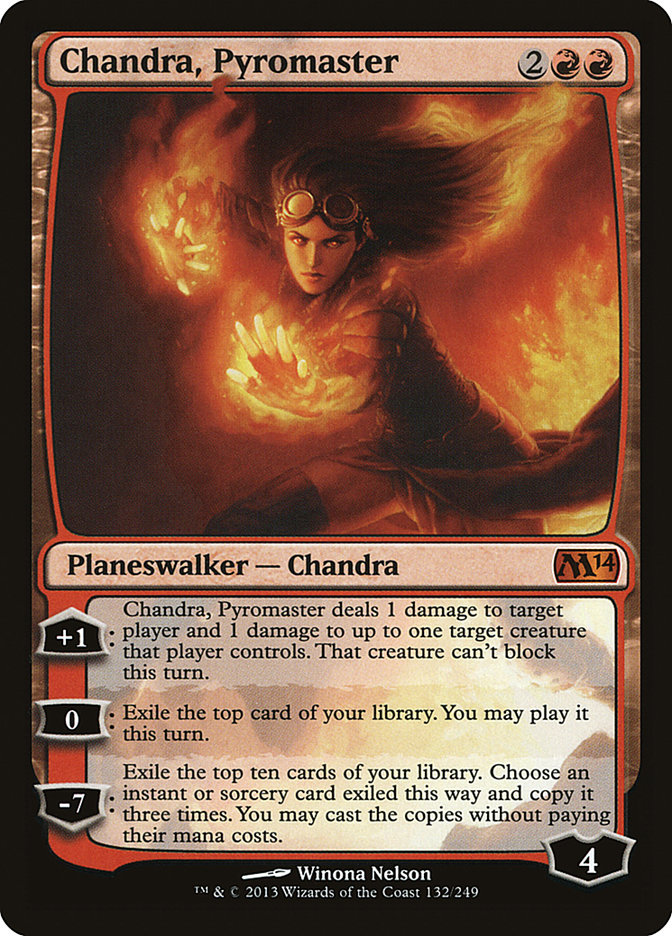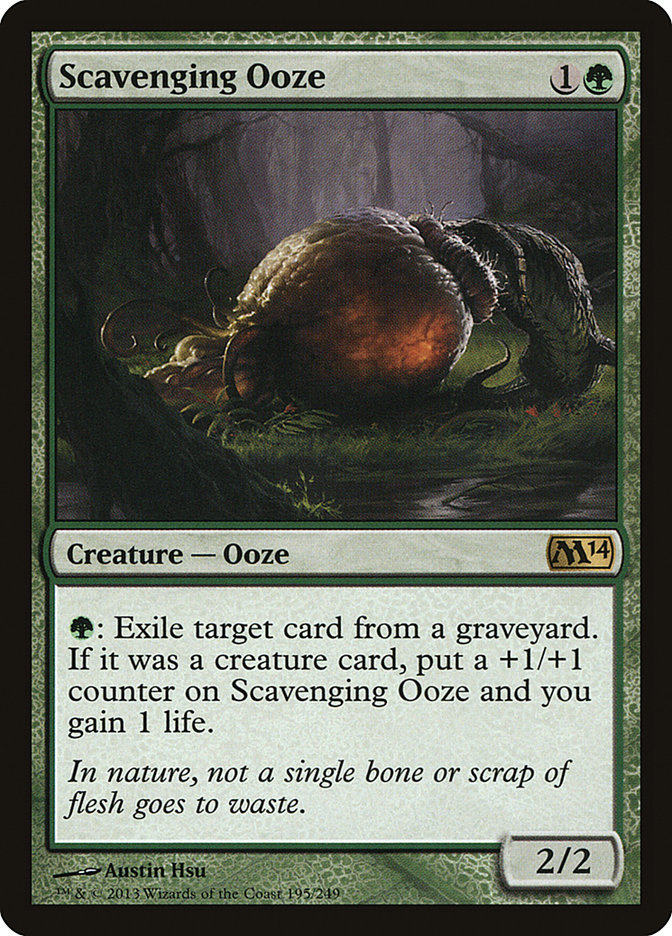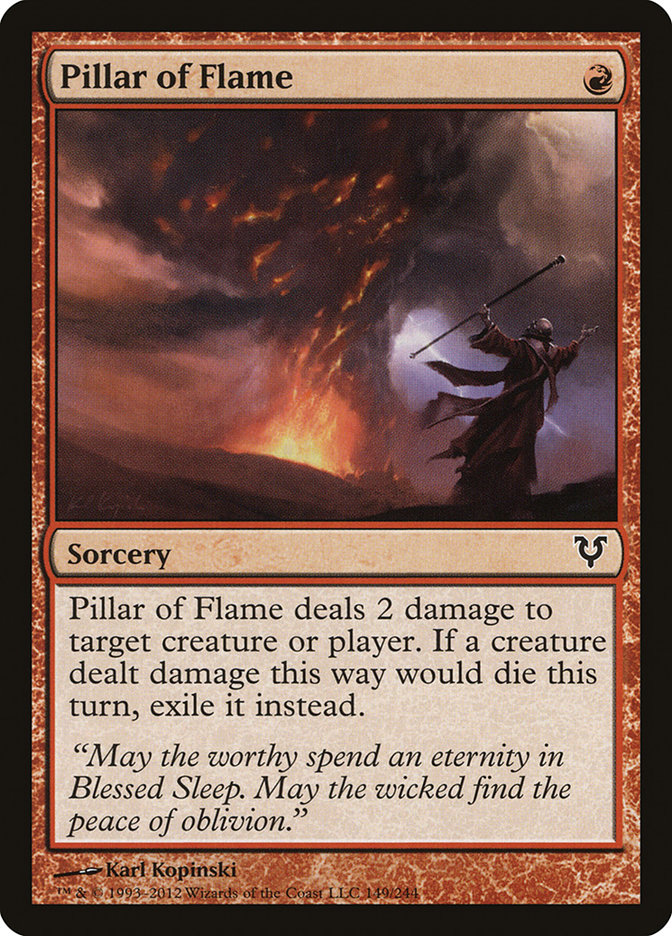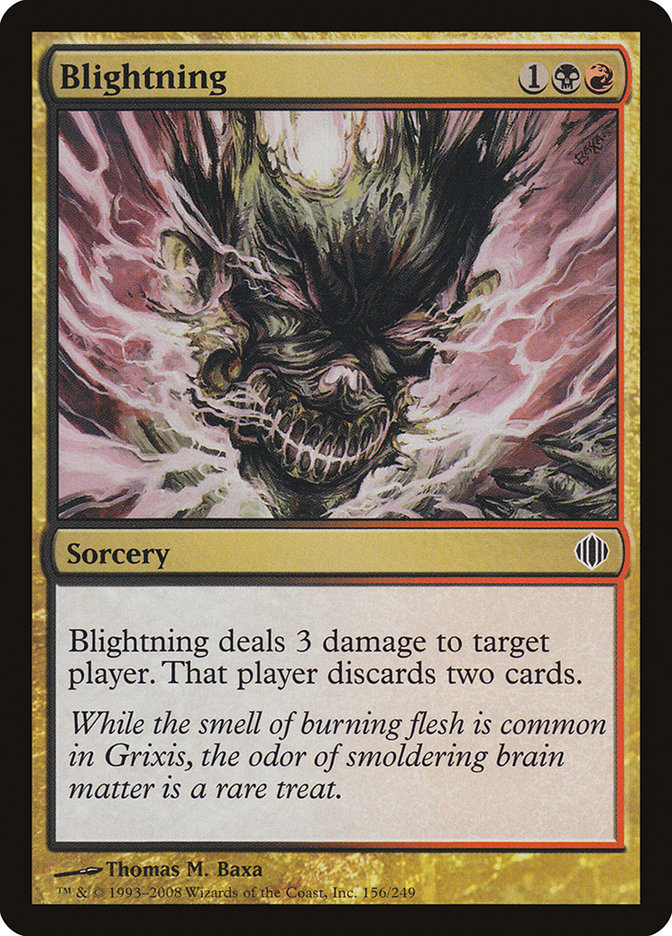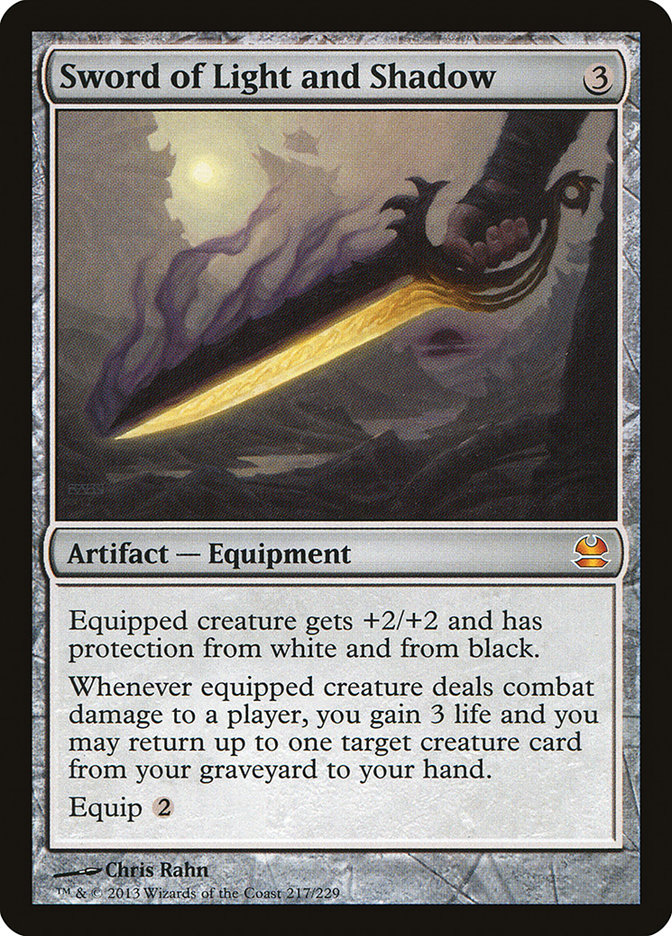The Modern Format: Knowing Your Deck
Last weekend I placed second at the Modern Grand Prix in Detroit. I’m going to discuss today a few interesting card choices and in particular the new inclusion of Chandra, Pyromaster. However, the first thing I want to stress is that the secret to my success wasn’t some broken deck or divine revelation about the format. The "secret" was simply long experience with my deck of choice, good knowledge of sideboarding, and a plan for each matchup—in short, hard work and practice.
Let’s discuss the results of the tournament.
Creatures (16)
Planeswalkers (3)
Lands (25)
Spells (14)

Six of the Top 8 decks of the Grand Prix were B/G/(x) midrange decks. Ben Stark, Adam Jansen, and I played traditional Jund; Ben Moir played Jund splashing white; and Willy Edel and Marcelino Freeman played B/G, which could be described as "Jund without red."
Six out of eight is certainly a huge number of spots for one archetype to take. However, I don’t believe that the sky is falling or that you’d be foolish to play something other than Jund in your next Modern tournament. I believe that B/G is one of many good decks in Modern; I believe that it was quite popular at Grand Prix Detroit; and I believe that it was disproportionately popular among top players.
The results of one tournament should not lead to any overly extreme claims about the format. Plus, Jund was not even the winning deck! If a card is banned, I hope it’s done in the interest of shaking up the metagame and not done in an attempt to correct a perceived imbalance (which I personally do not believe exists right now).
Let’s look at the other two Top 8 finishers.
Creatures (25)
- 4 Arcbound Ravager
- 4 Ornithopter
- 3 Steel Overseer
- 2 Memnite
- 4 Etched Champion
- 4 Signal Pest
- 4 Vault Skirge
Lands (16)
Spells (19)

I find Alex Majlaton results in Modern over the past year to be truly inspirational. He’s a poster child for working hard and knowing your deck paying off. In the period since the Modern Pro Tour in Seattle this time last year, Alex has played in six Modern GPs with Affinity, and his finishes were Top 4, Top 4, 33rd, 12th, 19th, Top 8. It’s difficult to call that anything other than mastery of the format and his deck of choice. Do you think Alex’s opponents have fewer Stony Silences and Ancient Grudges than other Affinity players? Somehow he finds a way . . .
Affinity is an excellent choice for a field full of B/G/(x) decks. I’ve always found Affinity to be a challenging matchup, even with a lot of sideboard hate (personally I played two Ancient Grudges and two Shatterstorms in my sideboard and still wasn’t happy to be paired against Affinity). Affinity is so fast that there’s no chance of Jund being able to race. That means you need to completely dismantle their offense, which means either taking out every Vault Skirge, Ornithopter, Signal Pest, Inkmoth Nexus, and Blinkmoth Nexus they draw—an impossible task—or taking away all of their Cranial Platings, Arcbound Ravagers, and Steel Overseers and then hoping that you can get something going before their chip damage finishes you off. This too is essentially an impossible task in game 1, particularly if you’re not playing a huge number of Abrupt Decays.
When I play Jund against Affinity, I accept that I’m going to lose game 1 unless my opponent gets a poor draw. With enough hate, each individual sideboard game might be in your favor, but you’ll still have to be on the draw for one of them and might at some point have to mulligan or miss a land drop. This is not even to mention the number of other ways that Affinity can steal games such as Blood Moon, Galvanic Blast, and the single best card against Jund: Etched Champion.
Yes, Alex seemed pretty thrilled—and rightfully so—when he learned that six of his seven opponents in the Top 8 were playing B/G. It was only an unlucky pairing in the quarterfinals that ended his run; if the brackets had broken differently, I believe that we could have easily seen Alex in the semifinals or finals of Grand Prix Detroit.
Let’s talk about what turned out to be Alex’s unlucky pairing and what turned out to be an unlucky pairing for approximately twelve other people last weekend.
Creatures (28)
- 4 Birds of Paradise
- 1 Spike Feeder
- 1 Eternal Witness
- 1 Wall of Roots
- 1 Orzhov Pontiff
- 1 Reveillark
- 4 Kitchen Finks
- 2 Murderous Redcap
- 1 Ranger of Eos
- 1 Qasali Pridemage
- 2 Viscera Seer
- 1 Spellskite
- 1 Phyrexian Metamorph
- 1 Melira, Sylvok Outcast
- 3 Deathrite Shaman
- 2 Voice of Resurgence
- 1 Archangel of Thune
Lands (23)
Spells (9)

Josh McClain won the tournament with Melira Pod. He too cited nineteen months of practice with the deck as his reason for choosing it and a key to his success. Melira has won the past three Modern Grand Prix in addition to the Modern Magic Online Championship Series tournament. What’s even more impressive is that it’s done so while being an extremely challenging deck to pilot and while not being one of the more heavily played decks in Modern.
Melira too is a good choice in a field full of Jund. Its explosive combo potential will win any game that the Melira player is left to its own devices. However, it also has the ability to play as an effective midrange creature deck, so an opponent who leans too heavily on hate cards like Grafdigger’s Cage and Torpor Orb can find themselves Gavony Townshiped straight out of the tournament.
I believe that Jund does not need to be an underdog against Birthing Pod decks, but unless the Jund player builds their deck with the matchup in mind and plays very carefully, they will be an underdog.
In my opinion, Melira Pod, Affinity, B/G/(x) midrange decks, and U/W/R Control are the top decks in Modern. They are well rounded, have a fighting chance against anything, and highly reward the tight play and mastery of their pilots.
Chandra Jund
Creatures (14)
Planeswalkers (6)
Lands (24)
Spells (16)

Chandra, Pyromaster
For one reason or another, U/W/R did not have a huge presence at Grand Prix Detroit. However, I believe that it will be a major player in the future of Modern, and I gave it a lot of credit going into the tournament. My top priority was to beat the four decks mentioned above while also knowing that Modern is remarkably diverse. I knew that I would likely also have to face Urzatron and Kiki Pod and that Faeries, Aggro, Splinter Twin, Scapeshift, Burn, and a dozen other strategies could show up in force.
The key to success in Modern is having a plan for each of these matchups. For me, Chandra, Pyromaster was it. With Bloodbraid Elf gone, I wanted a reliable source of card advantage, and Chandra is simply perfect for pressing an advantage and for putting a game away. When you think about it, nearly every card in Jund contributes directly to supporting or protecting a planeswalker: removal, discard, giant ground blockers, etc. I would take away enough of my opponent’s resources to dismantle their game plan, and then I would use Chandra to win the long game.
In particular, decks like U/W/R and B/G/(x) simply have so much removal that you can’t rely on just creatures to win the game. With something like Olivia Voldaren in the four-mana slot, it’s too easy for these decks to just kill everything you play, and as soon as you draw a few too many lands, you lose the game. Planeswalkers are perfect as an alternative angle of attack and fit perfectly with the plan of using Thoughtseize and Inquisition of Kozilek to exploit a weakness, which I described here.
One of the keys to Chandra, Pyromaster that’s missing in a card like Garruk Relentless is that she goes up to five loyalty right away. It’s too easy for U/W decks to take down a planeswalker simply by activating their Celestial Colonnade and attacking for four the turn that you tap out to play it. However, the prospect of spending twelve mana and two turns to kill Chandra is unacceptable for them, especially when you consider that you’ve gotten a free activation from her and can have mana available the second time they go to attack with their Colonnade.
Chandra’s +1 ability is quite powerful as well because mana dorks, Dark Confidant, Lingering Souls tokens, and any number of creatures out of Affinity are very important to keep under control in Modern. The often underestimated part of the ability is that you can make a creature like a Tarmogoyf or a Wurmcoil Engine unable to block, and this can quickly translate into a lethal attack when you consider how large Tarmogoyf, Scavenging Ooze, and man lands can become in Jund.
Scavenging Ooze
Scavenging Ooze is a recent addition to Jund and a very welcome one at that. An unfortunate consequence of Chandra, Pyromaster and her double-red mana cost is that my decklist has fewer sources of green mana than normal. In a different version of Jund, I could envision playing three copies, but I feel that two is appropriate for this type of build.
Scavenging Ooze is in the deck because it’s great to cast on turn 5 when you have some extra mana. It’s inconvenient to draw in multiples, and you don’t really want to be casting Grizzly Bears on turn 2 in Modern. Plus, you already have eight two-drops that are better than Scavenging Ooze!
However, I would also never leave Ooze out of the deck because it’s very powerful as a late-game card and provides crucial life gain to offset the damage you take from Dark Confidant, Thoughtseize, and shock lands. Most importantly, it serves as a sort of trump card against opposing Tarmogoyfs and Deathrite Shamans; you really don’t want your opponent to be the only one with a Scavenging Ooze when you play a B/G/(x) mirror match.
The Removal
Lightning Bolt is the best card in Modern. Even if it were the only red card you wanted to play in your B/G deck, I believe it would be worth it to dip into a third color for it. Four copies goes without saying.
My one Pillar of Flame, on the other hand, requires a bit of explanation. First, I really wanted a fifth removal spell that I could play on turn 1 so as not to fall behind against Deathrite Shamans, Dark Confidants, mana dorks, and Affinity. To this end, we (William Jensen, Owen Turtenwald, Logan Nettles, and I) discussed Burst Lightning, Forked Bolt, Magma Spray, and Pillar of Flame. We wanted the exile effect, as we considered Melira Pod a deck to beat and Voice of Resurgence and Kitchen Finks are both quite strong against Jund. However, Magma Spray is too bad in the matchups where it’s bad, so we gave the nod to Pillar of Flame, which can at least burn the opponent or one of their planeswalkers.
Maelstrom Pulse, while not as mana efficient as the other options, is amazing in its versatility. Most importantly, it answers Lingering Souls and Birthing Pod, which are two problem cards for Jund. It can also randomly save you from a Gideon Jura, a Batterskull, or a Sword of Light and Shadow. I believe that two copies is the right number.
On the other hand, Abrupt Decay really isn’t the best at killing anything that’s popular in Modern right now (with the one exception of Cranial Plating). It fails to kill Birthing Pod, fails to kill man lands, and is generally awful against most builds of U/W/R Control. Abrupt Decay is an excellent card, but I think it’s worse than Terminate right now all things considered.
Two copies of Terminate rounded things out for me since it takes care of Celestial Colonnade and, well, every other creature in the format.
Blightning
Blightning has long been a pet card, but it has a relatively low power level by Modern standards. You shouldn’t play it when there are too many Loxodon Smiters around or when the format is too fast. However, it’s quite good in Jund mirrors and excellent against U/W/R. It makes for nut draws when you cast Liliana of the Veil and follow it up with Blightning and the opponent is empty-handed on turn 4. As always, it’s a great way to beat opposing planeswalkers. I loved the singleton Blightning.
The Sideboard
Building a sideboard in Modern is a challenge since the format is so diverse and it’s so much about guessing which decks you’ll be paired against. However, I’ll walk you through my decisions based on the metagame that I expected for Grand Prix Detroit, which is still roughly what I’d expect for any Modern tournament in the next few months.
Two Shatterstorms and two Ancient Grudges is an effective package against Affinity and is about what you need to feel like you have even odds to win a match against it. Ancient Grudge is brutally efficient and helps you survive the early turns and also relevantly comes in for other matchups (like Spellskite decks). However, it’s not an answer to Etched Champion, which is why I split it with the powerful Shatterstorm. Note that nothing can be regenerated from Shatterstorm (say via Welding Jar) but it can be from Creeping Corrosion.
Two Fulminator Mages and a Sowing Salt can be described in the same way except applying to Urzatron. Sowing Salt is immensely more powerful in that particular matchup, as you will rarely lose when you resolve it. With Fulminator Mage, you can sometimes lose to Tron even after casting one or sometimes even two copies. However, it’s one of the most widely applicable sideboard cards; it’s great against Scapeshift and U/W/R and can come in against a lot of other decks such as Jund. I like splitting them because even against Tron, if you were to draw all Sowing Salts, you might effectively lose before you can cast them, so the cheaper Fulminator Mage is a perfect bridge to the more powerful Sowing Salt.
Two Grafdigger’s Cage, two Olivia Voldarens, and one Grim Lavamancer are there for Birthing Pod decks in their various forms. Grafdigger’s Cage stops Birthing Pod and Chord of Calling cold and is even helpful against persist creatures and Reveillark. Beyond that, if there’s one weakness of Pod decks, it’s their inability to easily remove creatures with noncombat abilities. Lavamancer is an early-game powerhouse in its ability to take down mana creatures at will. Olivia Voldaren is a great way to lock up a game if you’re in a stable position by the time you cast her. Lavamancer and Olivia come in for virtually every creature matchup as well.
One Obstinate Baloth and one Sword of Light and Shadow offer life gain. I’m a fiend for life gain, especially in a format where you take so much damage from Dark Confidant, Thoughtseize, and shock lands. Plus, Mono-Red Burn is a playable deck, and it’s the single worst matchup for Jund. One Baloth and one Sword don’t make the matchup good, but they’re at least something; they give you a fighting chance in the games where your opponent has less than a perfect draw. As always, these cards come in for a variety of matchups, and Sword of Light and Shadow really shines against decks with Lingering Souls.
The Tournament
Though I prepared for a wide range of opponents, Grand Prix Detroit for me felt like an endless stream of B/G/(x) mirrors. In fifteen rounds (not counting byes), I faced B/G/(x) nine times!
2-2 vs. Jund
3-0 vs. B/G
2-0 vs. B/G/W
2-0 vs. Splinter Twin
1-0 vs. Burn
1-0 vs. Affinity
1-0 vs. U/W/R
0-1 vs. Melira Pod
12-3 Overall
I do feel that Chandra, Pyromaster is great against the field. Certainly, it was instrumental in my win over U/W/R and would have been excellent had I drawn it in the finals against Josh McClain Melira Pod deck. Ironically though, had I known I would play so many B/G/(x) mirrors, I would have played something else in her place (probably Huntmaster of the Fells).
Don’t get me wrong; Chandra is still good in the Jund mirror, and I certainly don’t sideboard her out (you really just want every powerful card you can get your hands on). However, Chandra is at her best when you’re winning or even in a game but isn’t great at helping you come back from behind. Sometimes in a Jund mirror, you’re facing down a giant, unanswerable Tarmogoyf, or your opponent simply has too many man lands. In these cases, Chandra is not as good as Huntmaster would be.
Although Jund and B/G are popular, it’s also clear that Melira Pod isn’t going anywhere. I’ll probably register Chandra in my next Modern tournament, but the point is that a lot of it is a guessing game. I’ll continue to pay close attention to what decks are most popular and what I’ll need to do to beat them. If you choose to play Chandra Jund, then great! I hope the deck and its leading lady serve you well. However, just be sure to know your deck, know what you’re up against, and have a plan for the important matchups.

